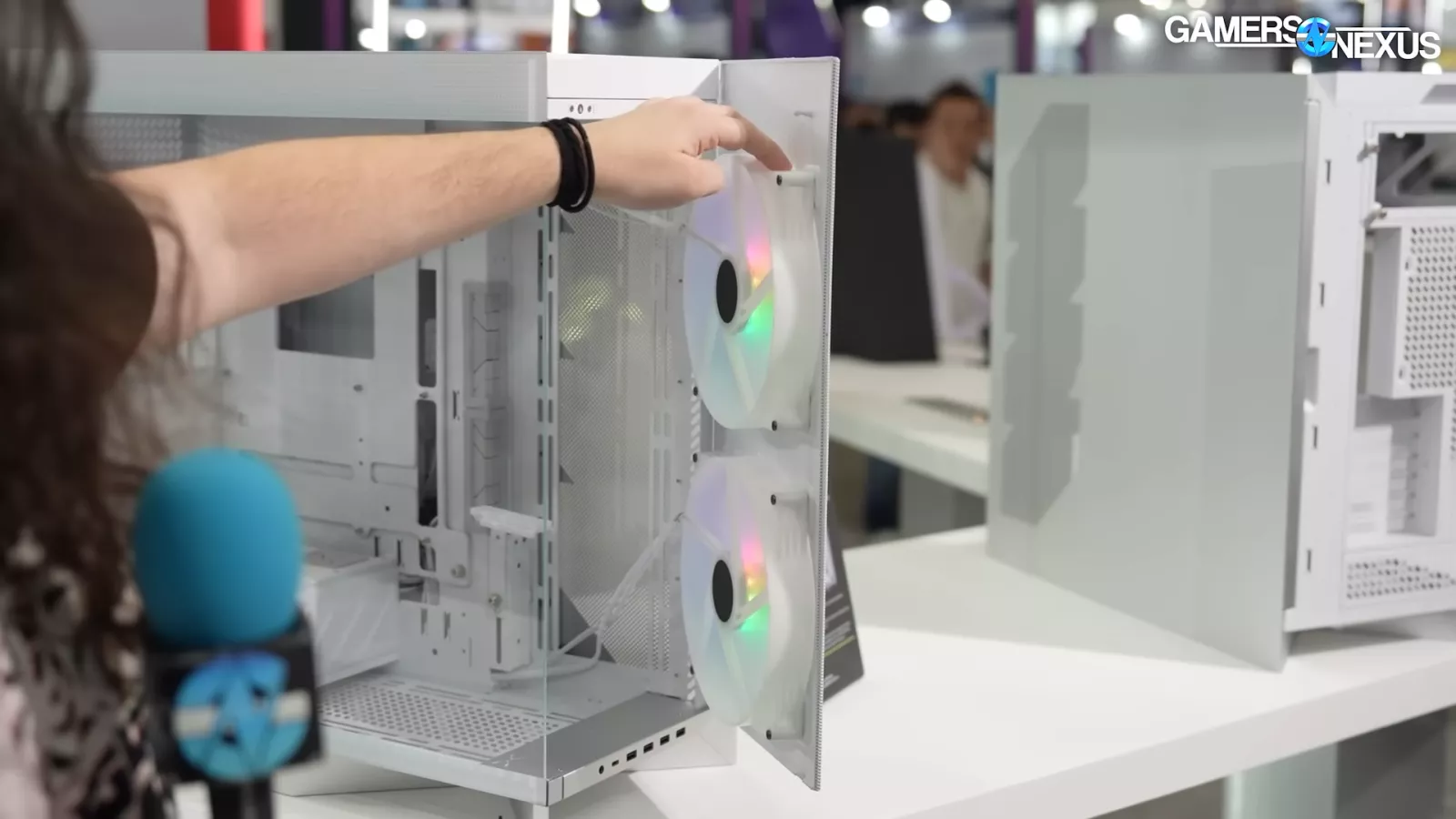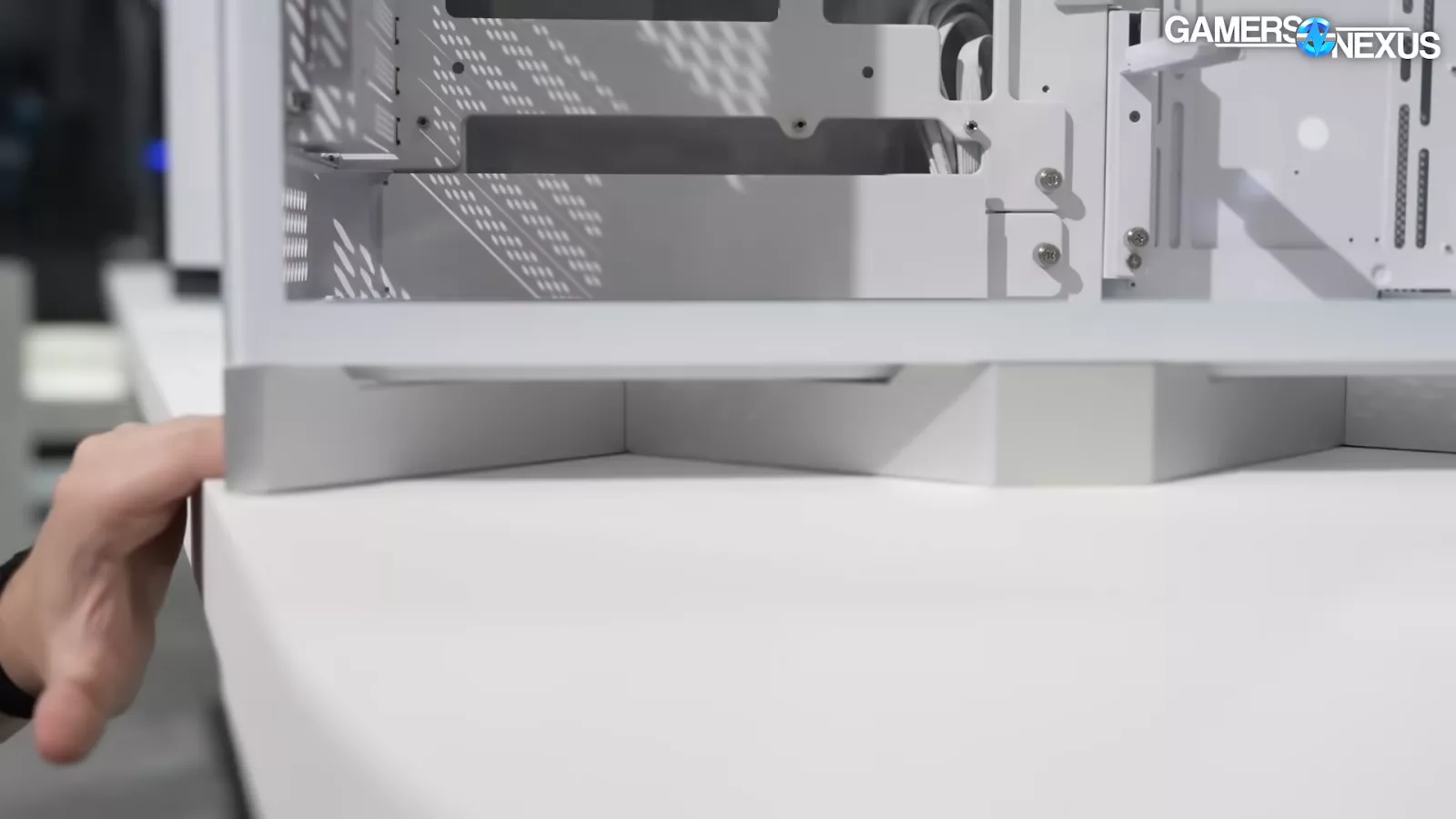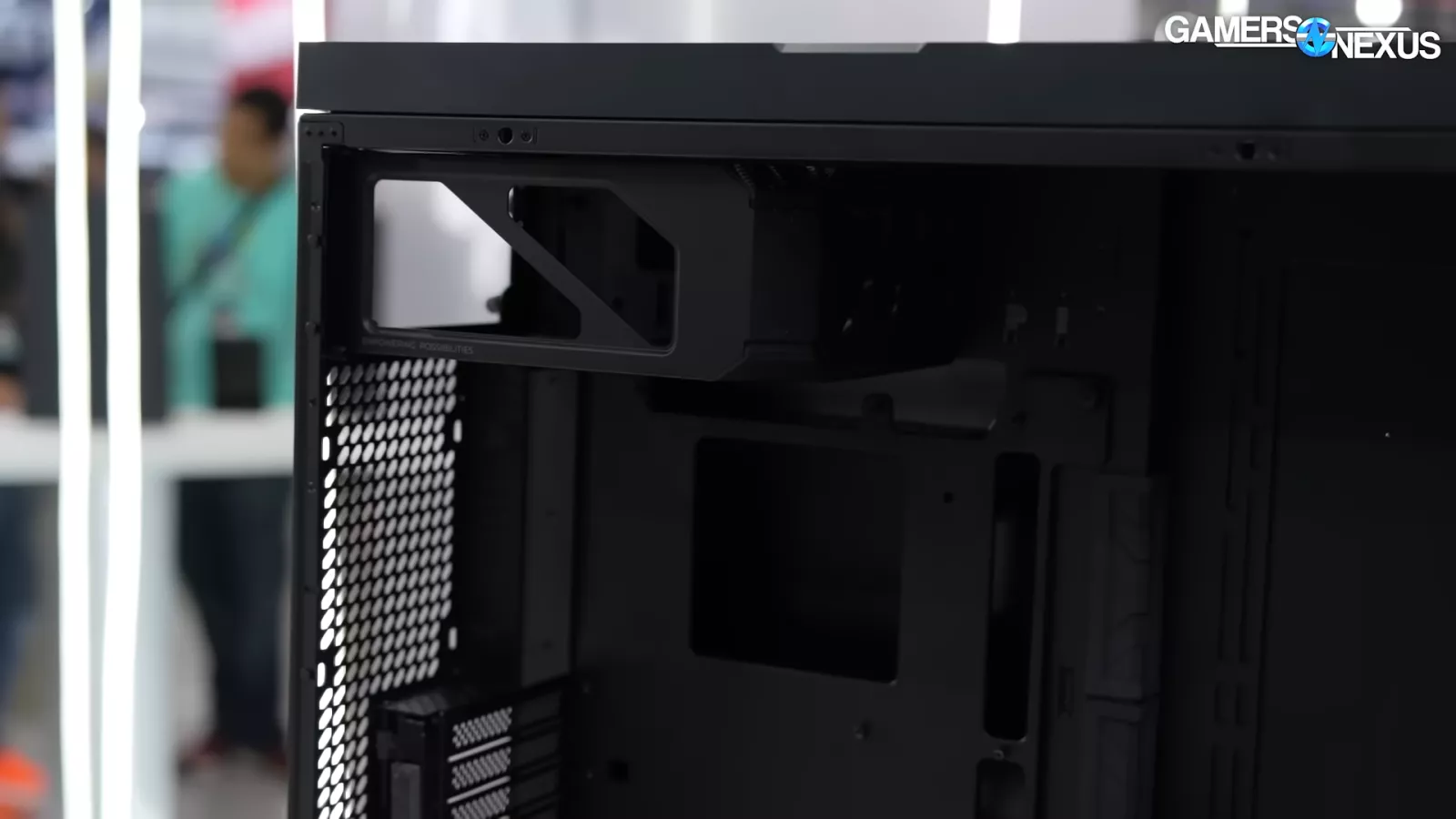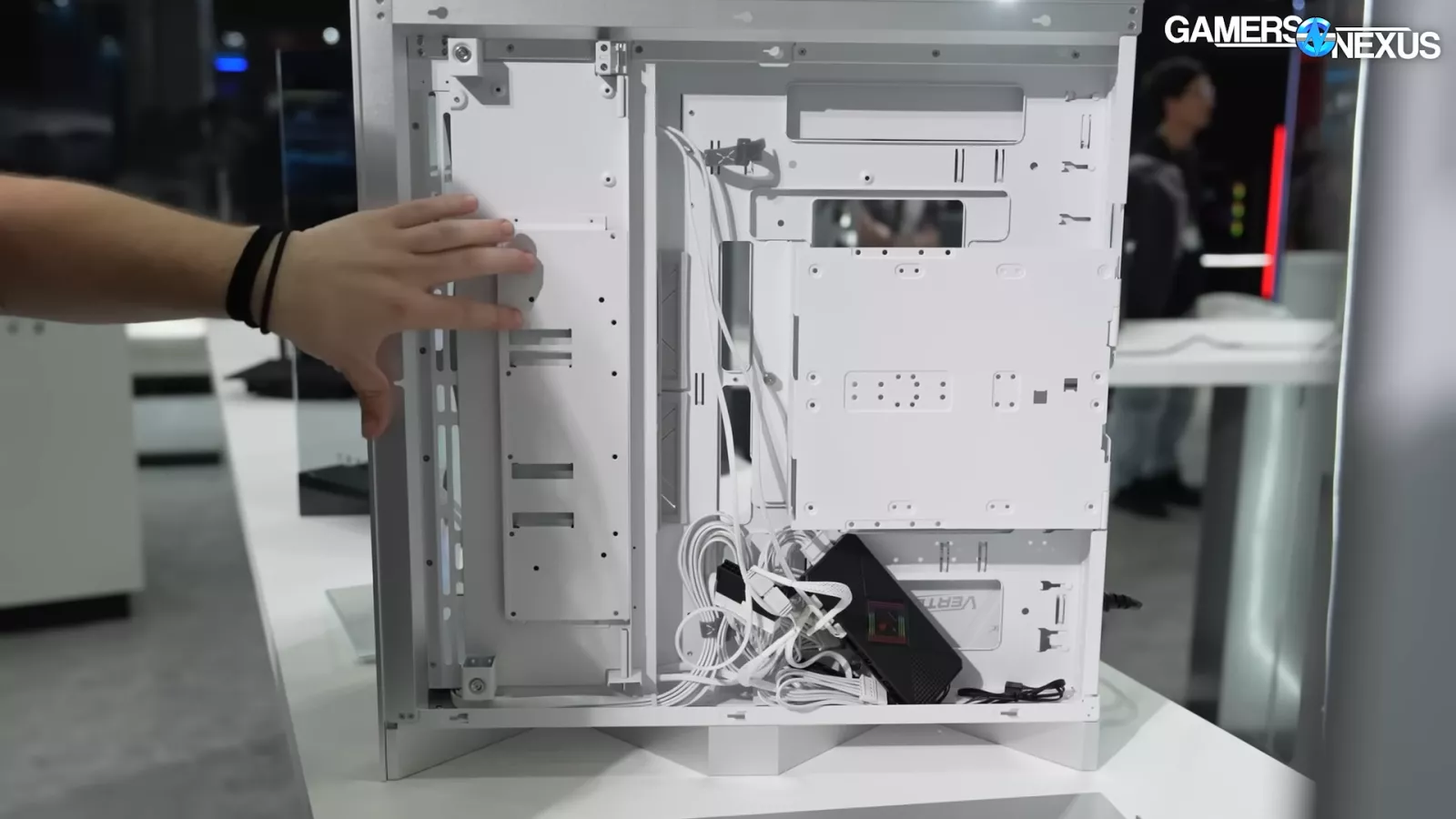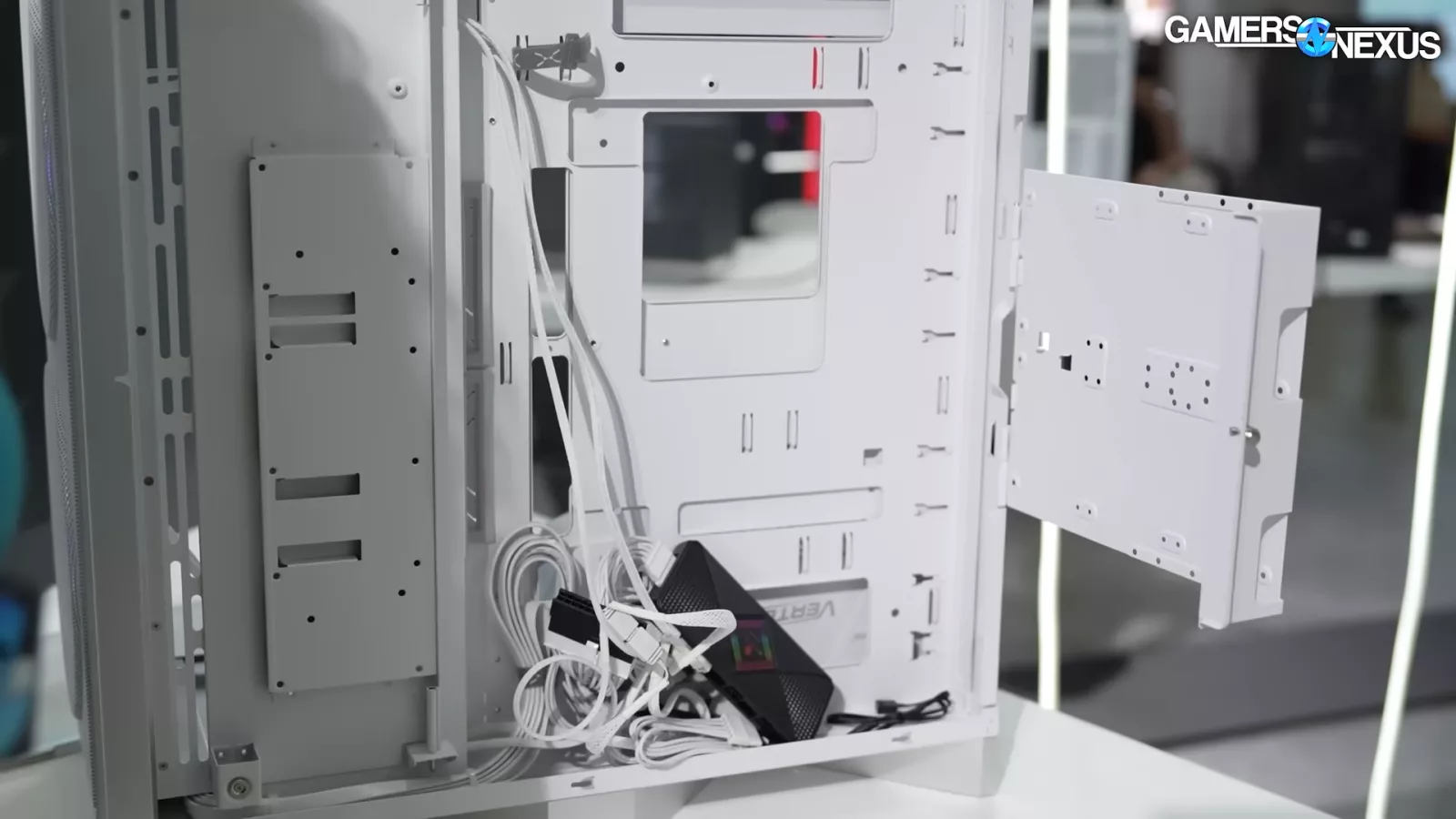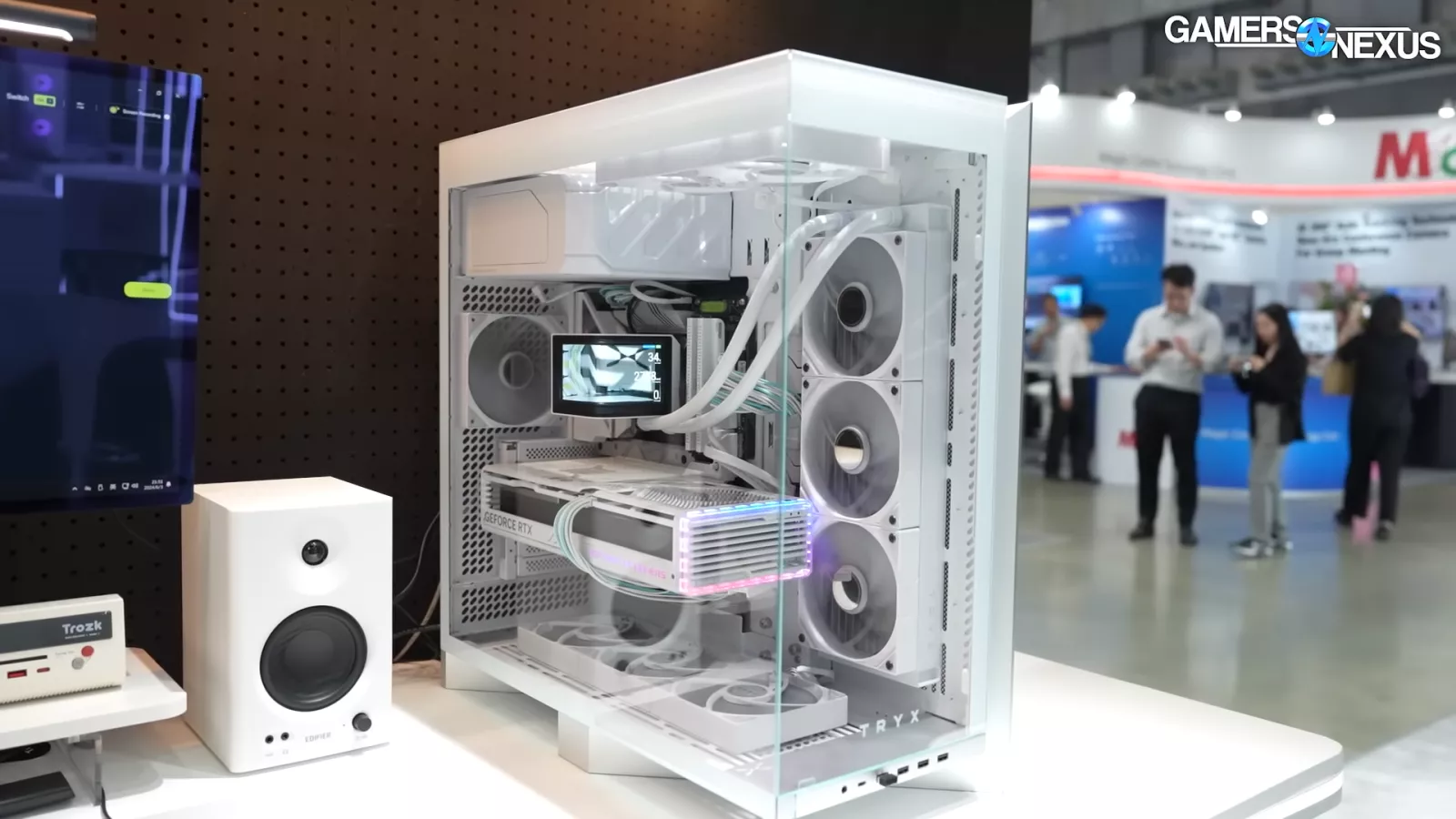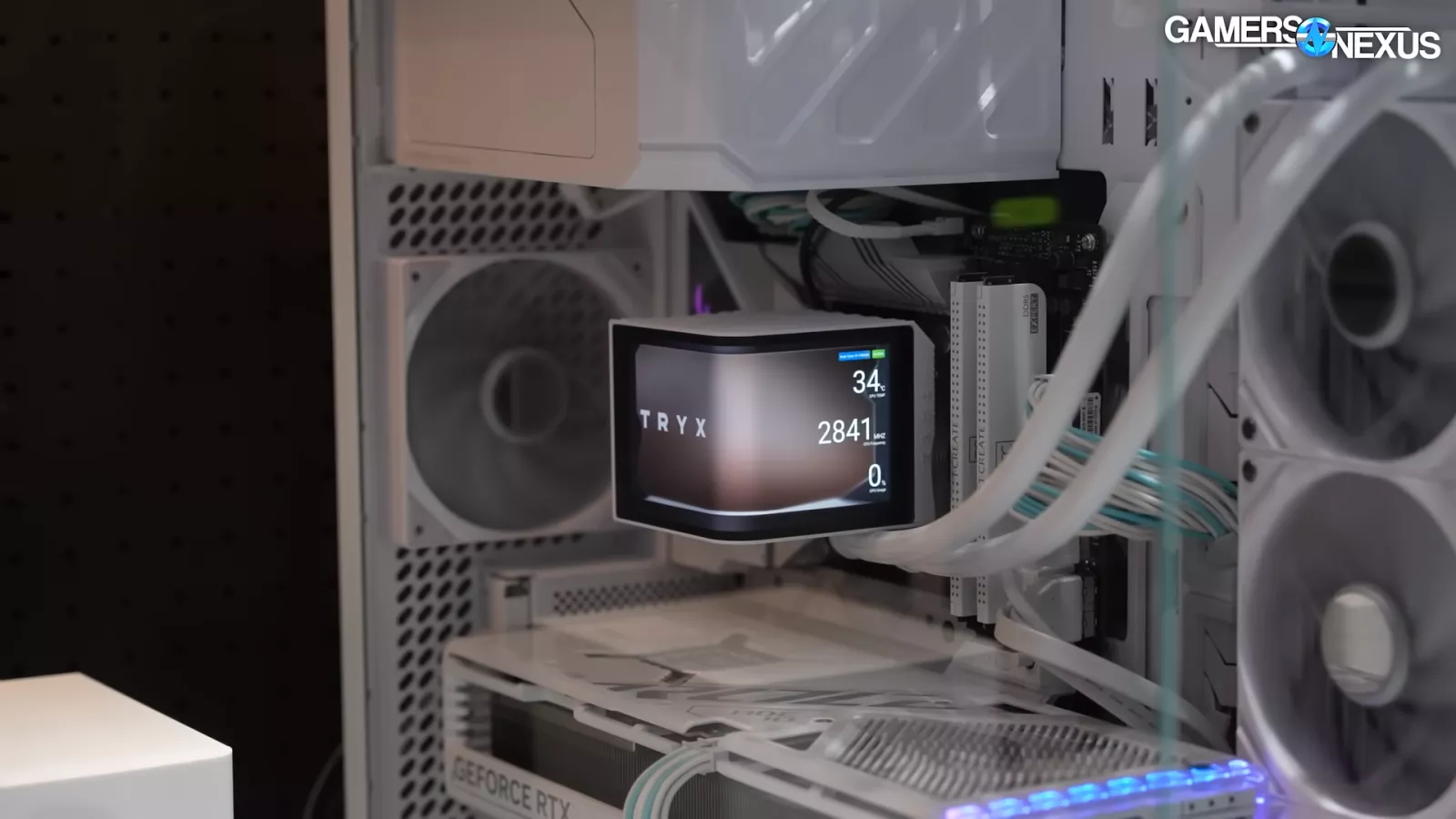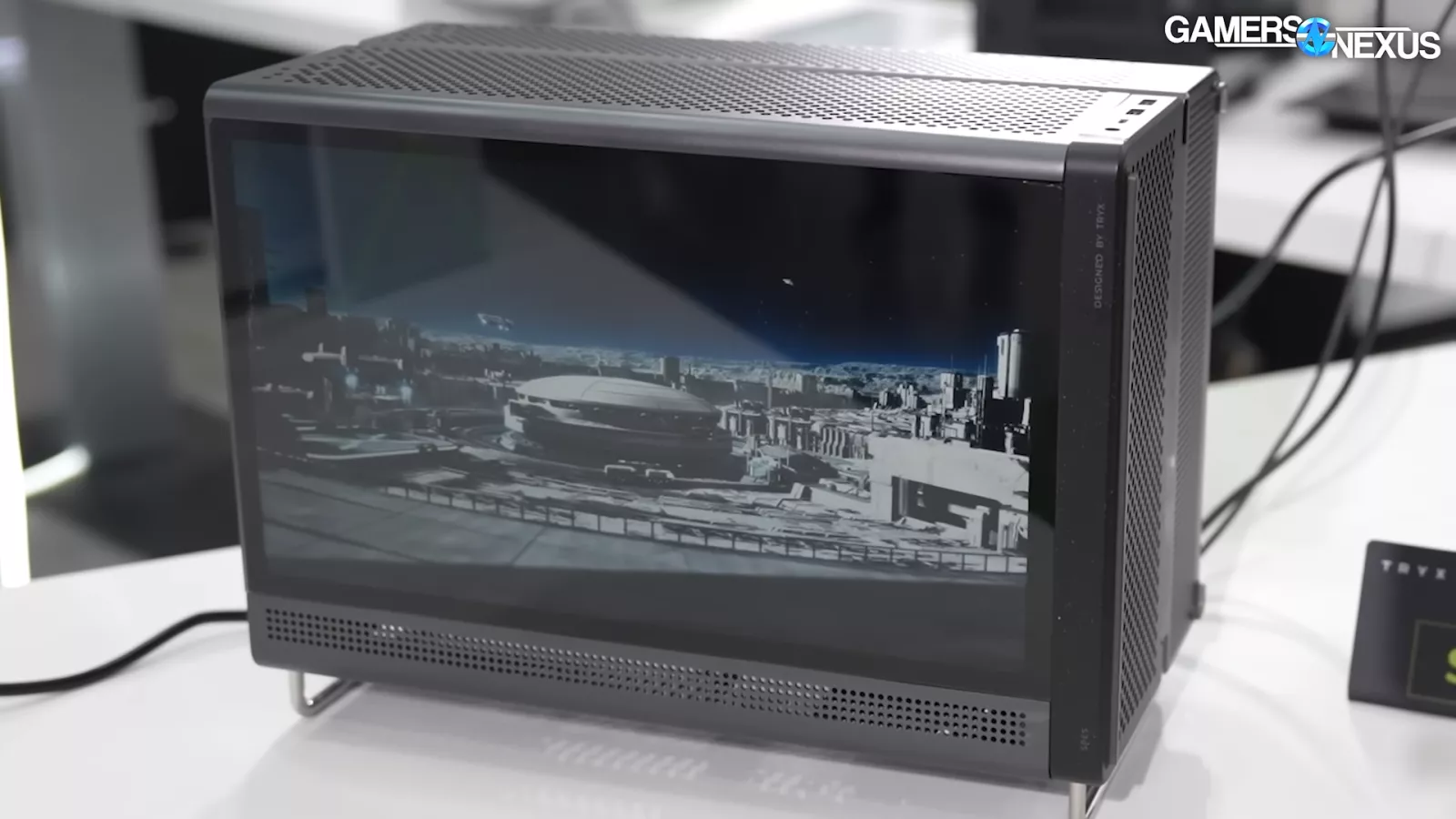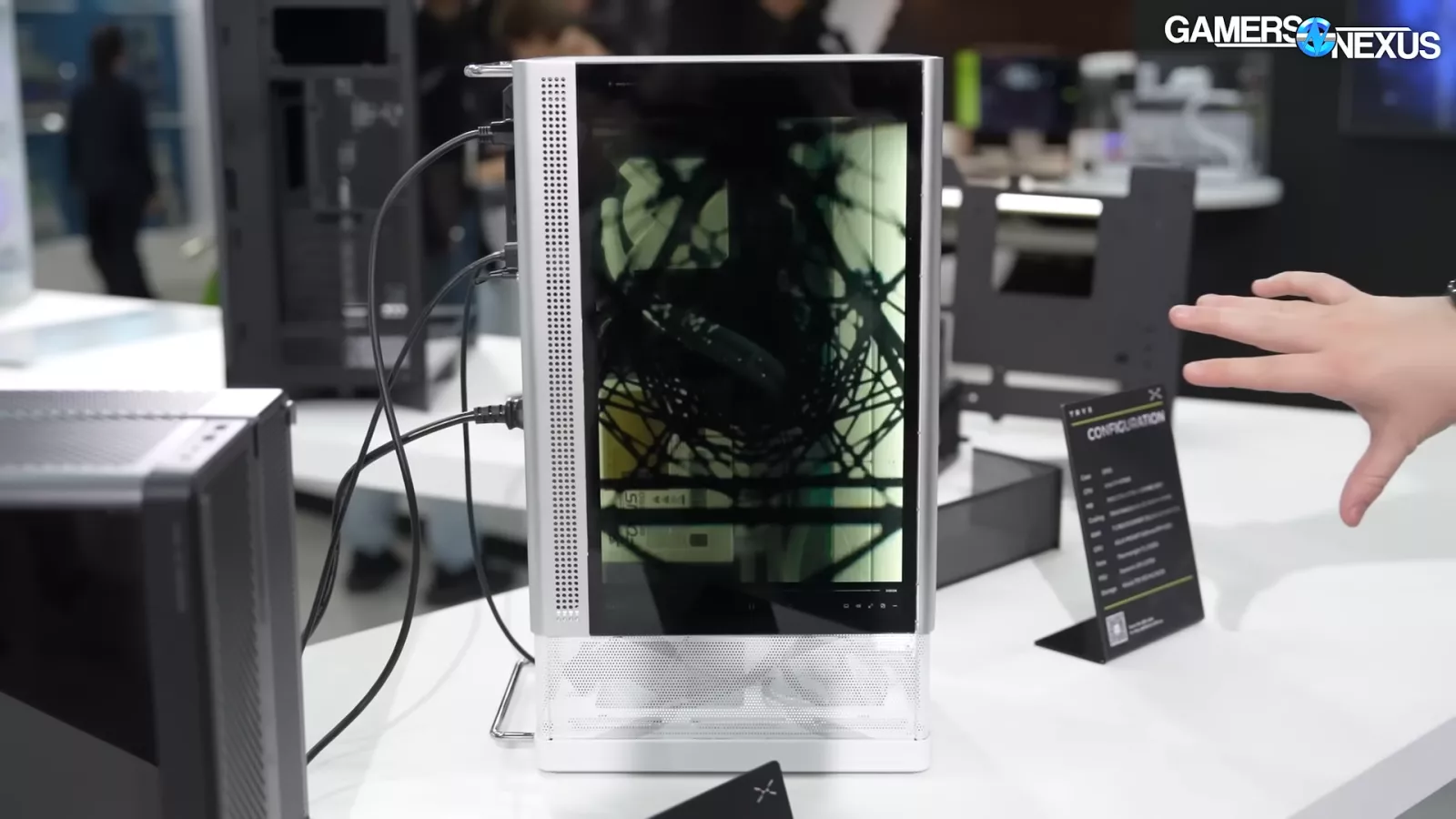
Tryx is a new case and cooler company from former Asetek, Asus, and Cooler Master employees
The Highlights
- The Luca case is a semi-modular chassis that has a front panel that swings out on a hinge along with a thick aluminum bottom
- Tryx’s “3D” Panorama cooler comes with a 6.5-inch AMOLED display that tries to produce an anamorphic look
- The Spes is a Mini-ITX case that has a 15.6-inch display attached to its side
- The Otavia case features some psychedelic fabric on the front of its chassis
Table of Contents
- AutoTOC

Intro
Tryx is a brand new company that’s made up of several people from the industry including employees from Asetek, Cooler Master, and Asus. The company formed to create some cases and coolers that are pretty different.
We first heard about the company after it showcased its “3D” panorama cooler, which the company showed off at Computex along with some other cases. Let’s check them out.
Editor's note: This was originally published on June 5, 2024 as a video. This content has been adapted to written format for this article and is unchanged from the original publication.
Credits
Host, Writing
Steve Burke
Video Editing, Camera
Mike Gaglione
Camera, Editing
Vitalii Makhnovets
Writing, Web Editing
Jimmy Thang
Luca

Starting things off, we have the Luca case.
It has a hinged door as a front panel, and its airflow variant comes with two 200x38mm dual-ball-bearing fans. That’s on the thick side for fans, comparable to the fans on the Torrent. The hinging is the most interesting thing here, and it would be phenomenal if Tryx could move to pogo pins or pin-to-pad contact for the fans instead of wires, but we don’t know what the pricing impact would be.
One interesting thing about the case is that it features a massive, thick aluminum structure on the bottom that acts as the feet. One criticism we have here is that it appears to obstruct airflow for the bottom fans, especially where the middle fan would be.

The Luca’s side panel has an indent that, once you push it in, allows the side panel to hinge and hang down, enabling you to remove it.
The Luca is also semi modular. Its power supply chamber can be removed from the bottom and moved towards the top of the case.
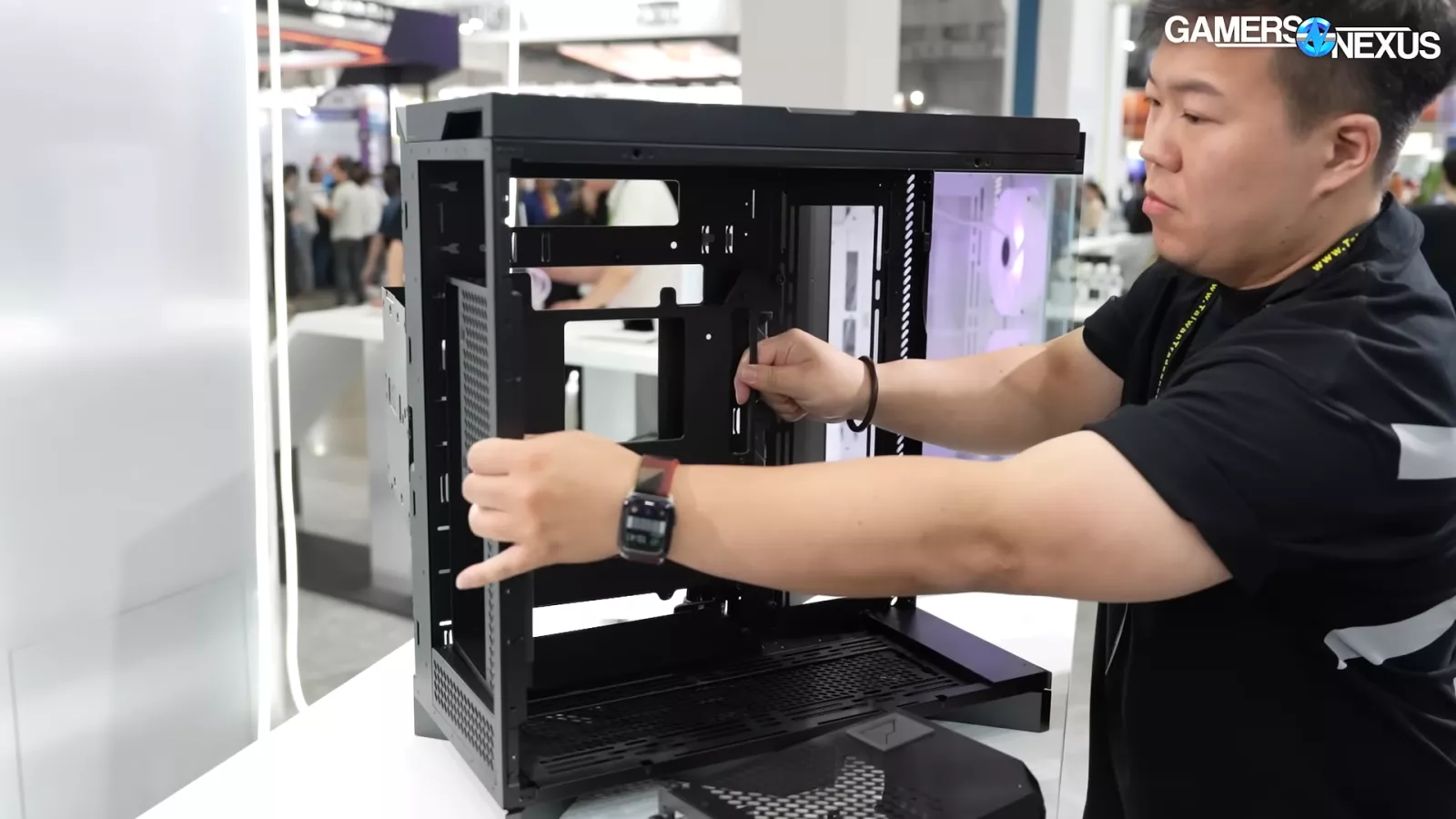
Users can also remove the motherboard tray via some screws, which enables you to shift the board up and down.

The top of the case has a handle, and Tryx says it will offer some engraving customization options, though we don’t have much further details than that at the moment.
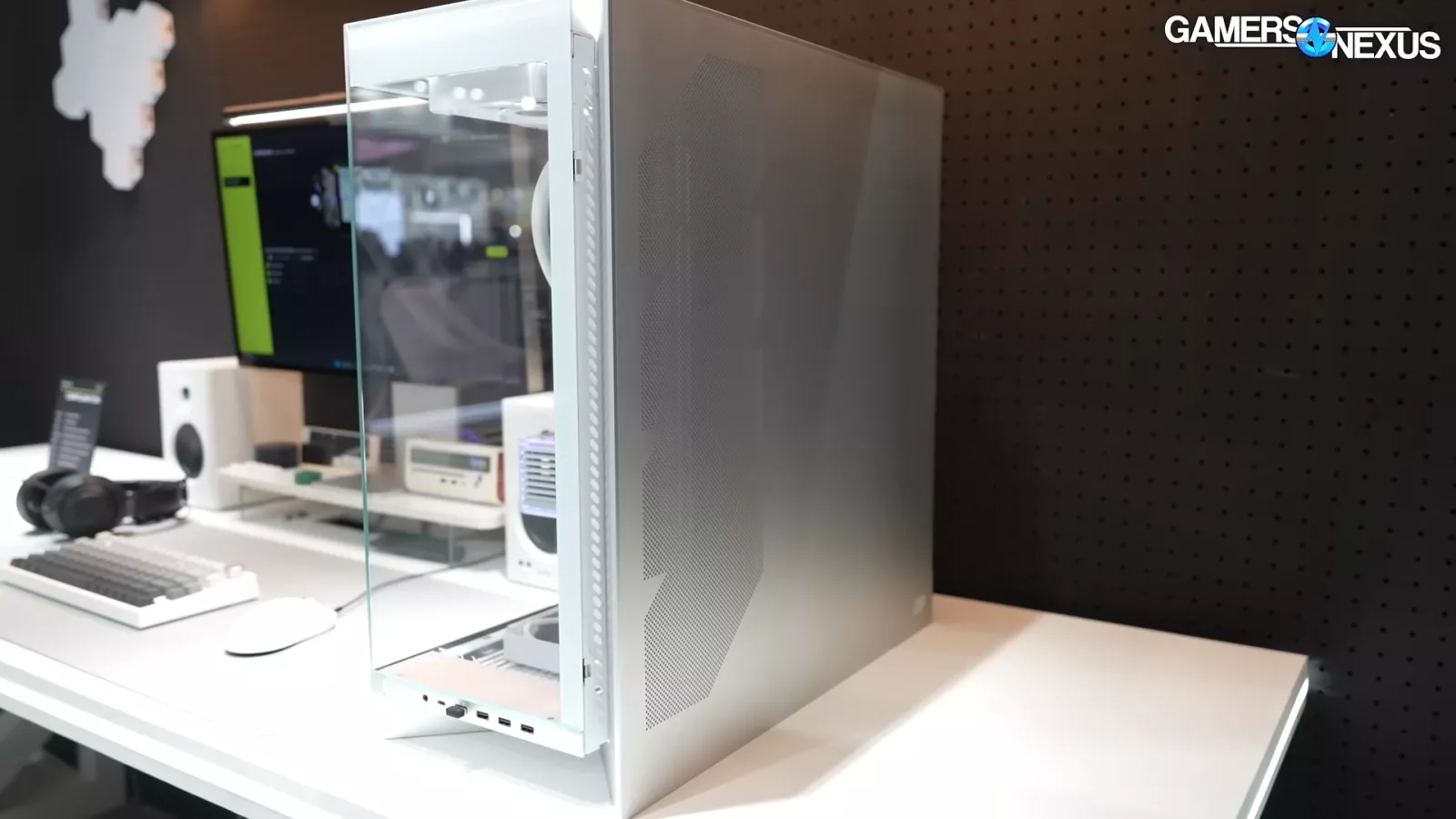
The back panel is made of aluminum and has ventilation.
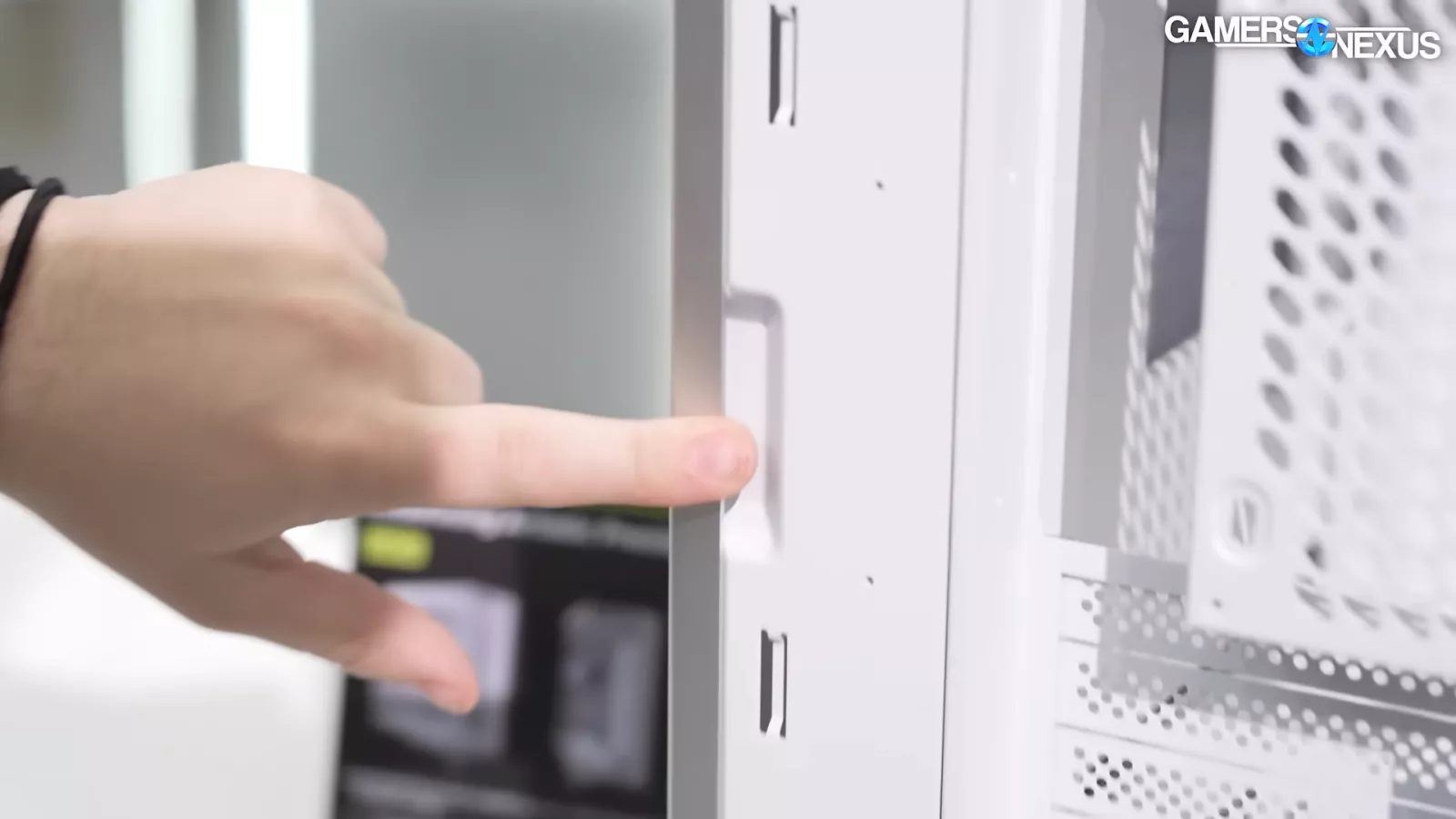
It also has an indent at the rear of the case that allows you to pull the panel off.
Once you open that part of the chassis up, you’ll see that there are two swinging cable covers, both of which provide access to storage drive installation.
The case will come in two variants. The airflow version will cost $220 and come with its two front fans whereas the glass version will cost $200. It’s expected to release in Q3.

Tryx Panorama Cooler
Now we’re moving on to the product that made us aware of the company. There are two versions of Tryx’s Panorama coolers. The more expensive pro version uses pogo pins that connect the screen to the chassis.
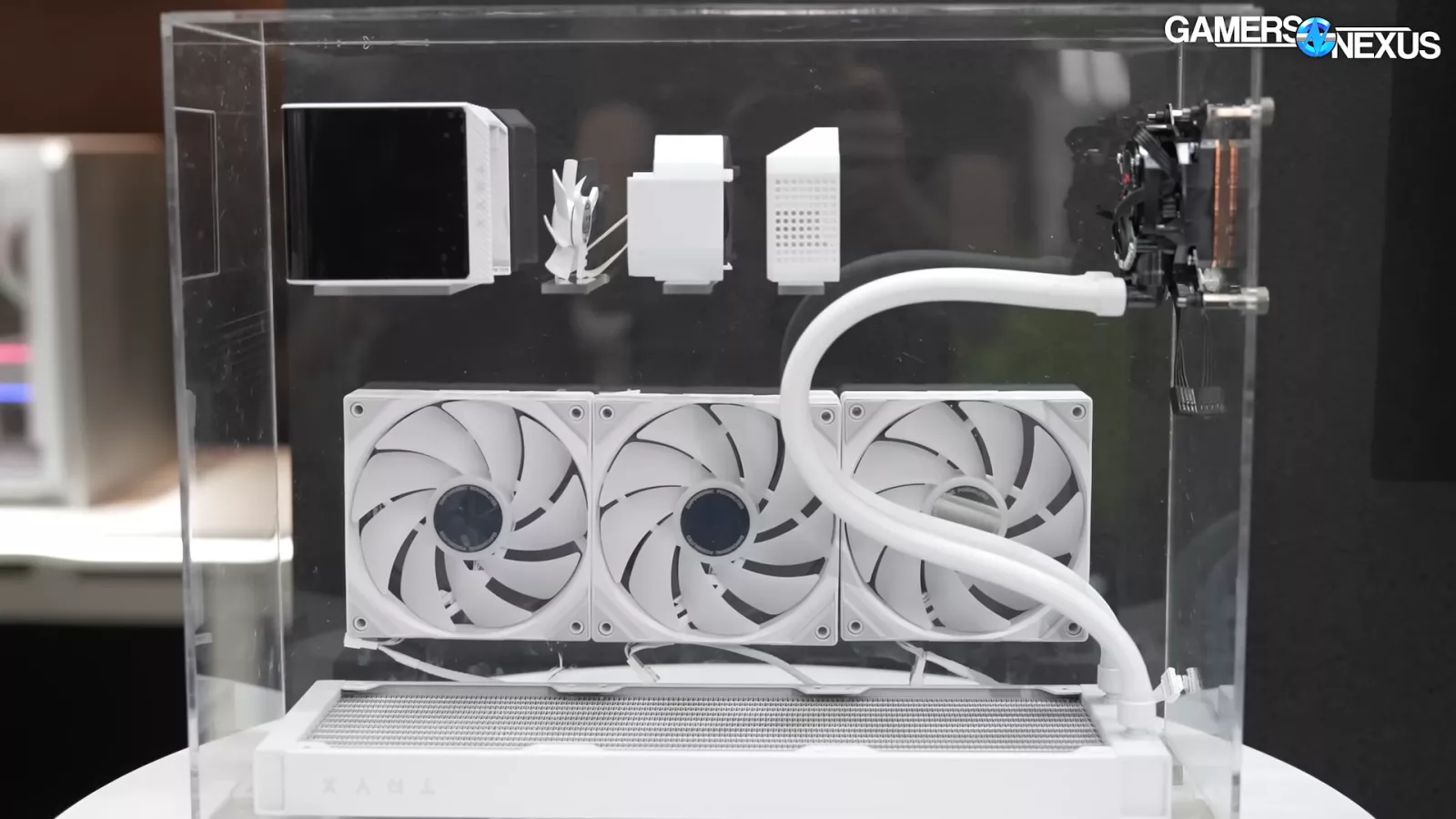
The Pro model also has a VRM fan.

The cheaper SE version is plastic and has a wired connection.
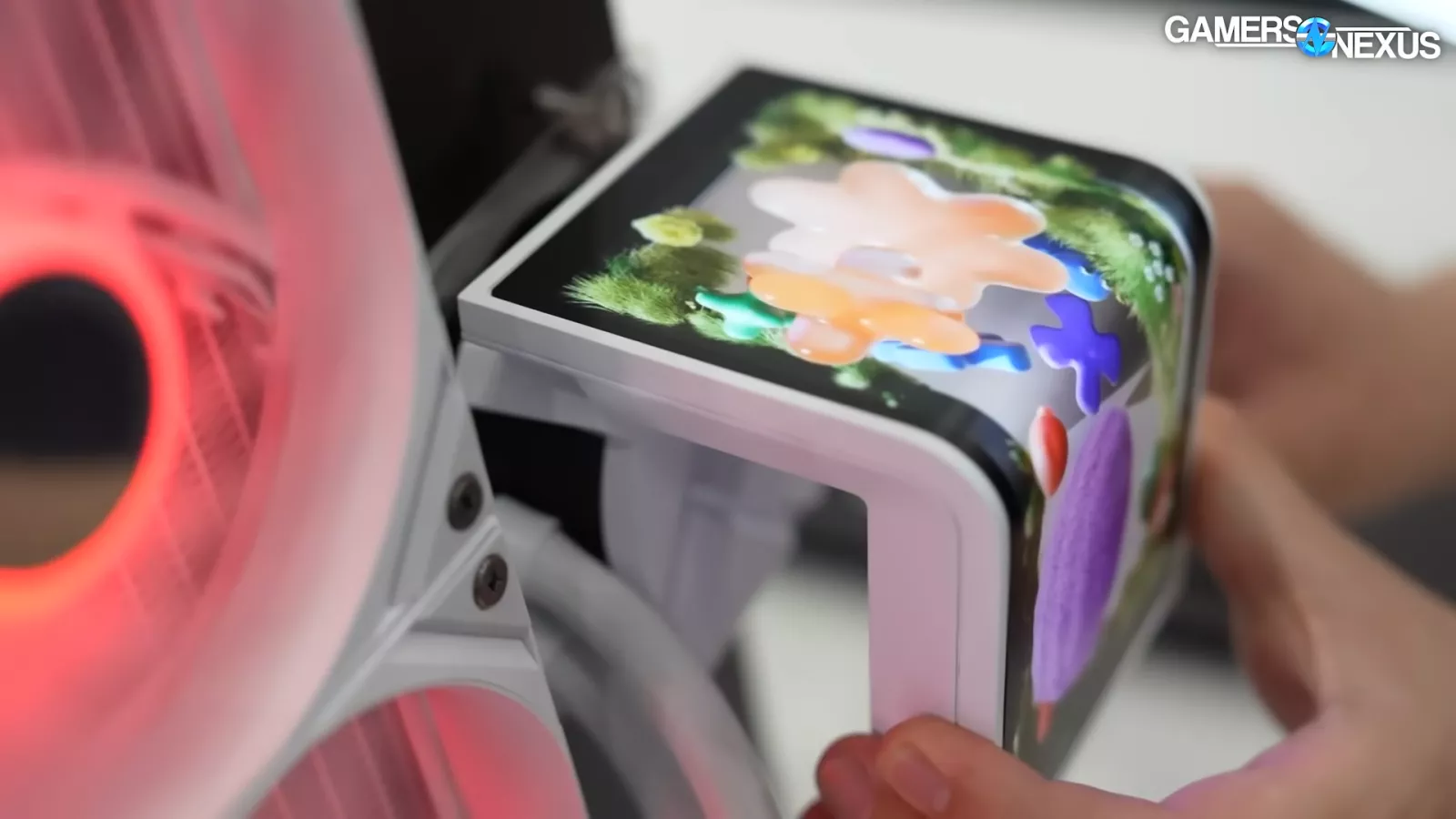
When we asked the company why they don't have a socketed version since it uses USB 2, they said this implementation allows you to rotate it, which makes it reconfigurable.
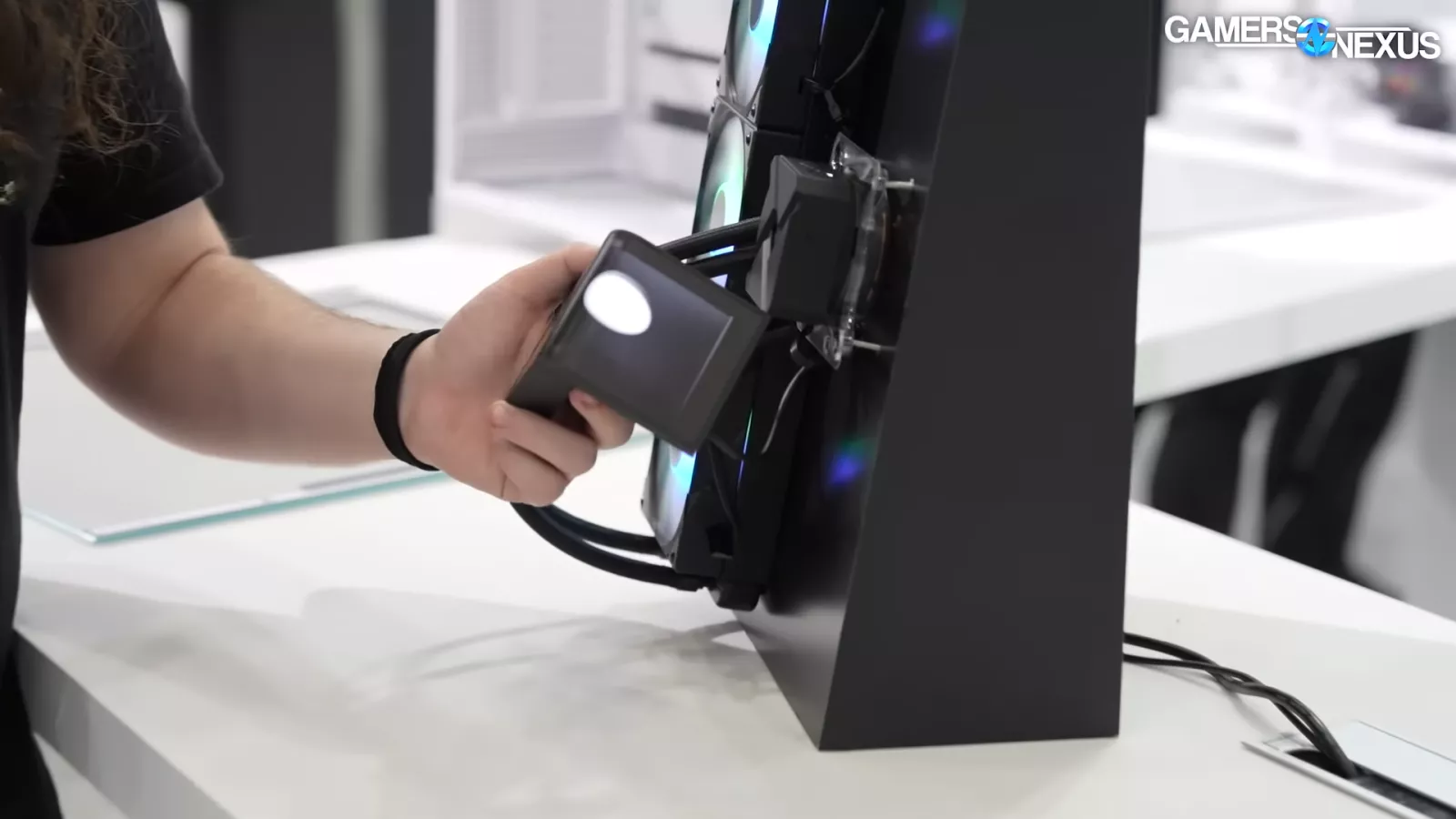
According to Tryx, it uses an Asetek cooler with an 8th-generation pump solution.
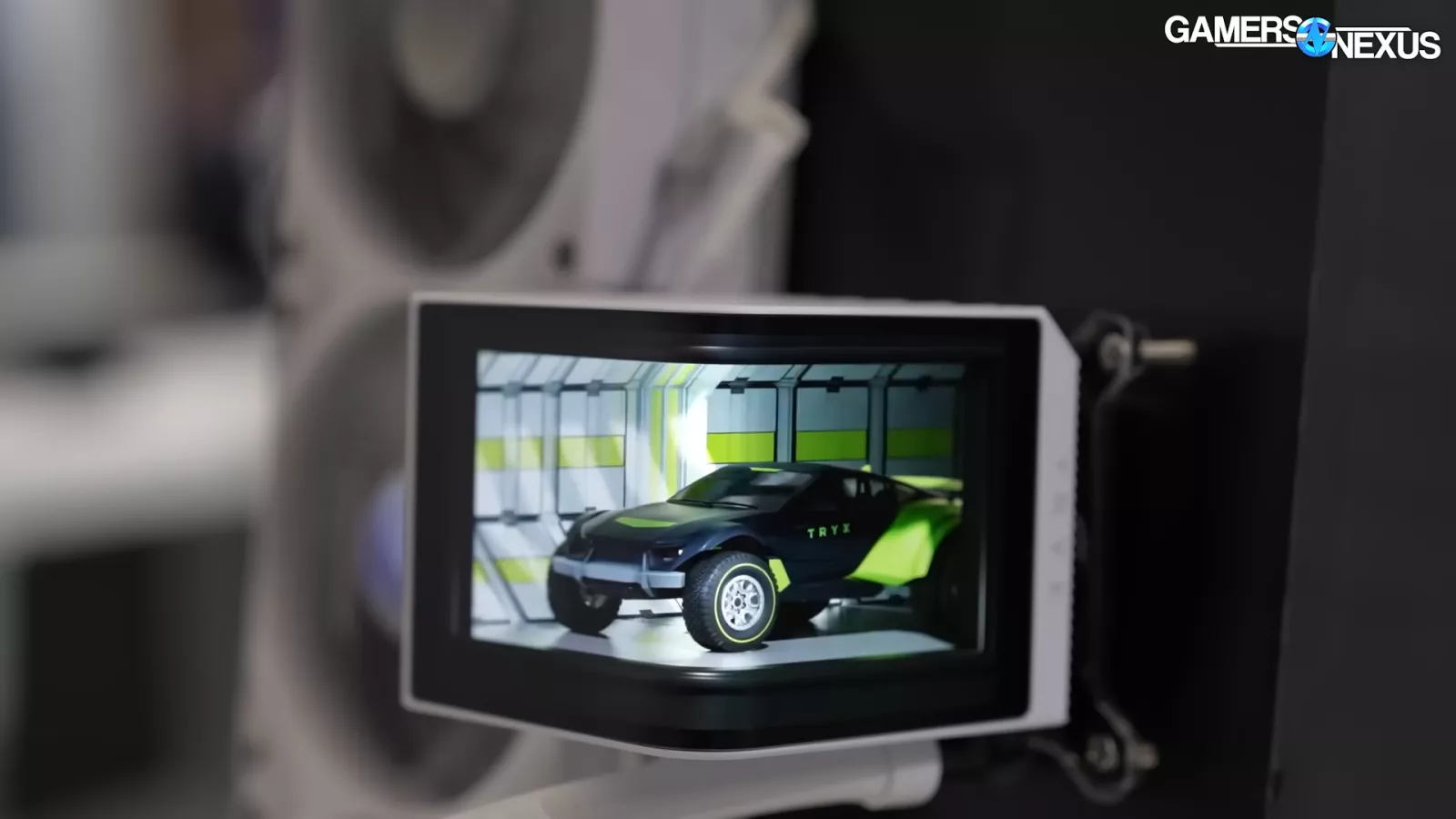
For its screen, it uses a 6.5-inch AMOLED display. They’re trying to get an anamorphic look, which would make it look like the visuals are slightly popping out of the screen.
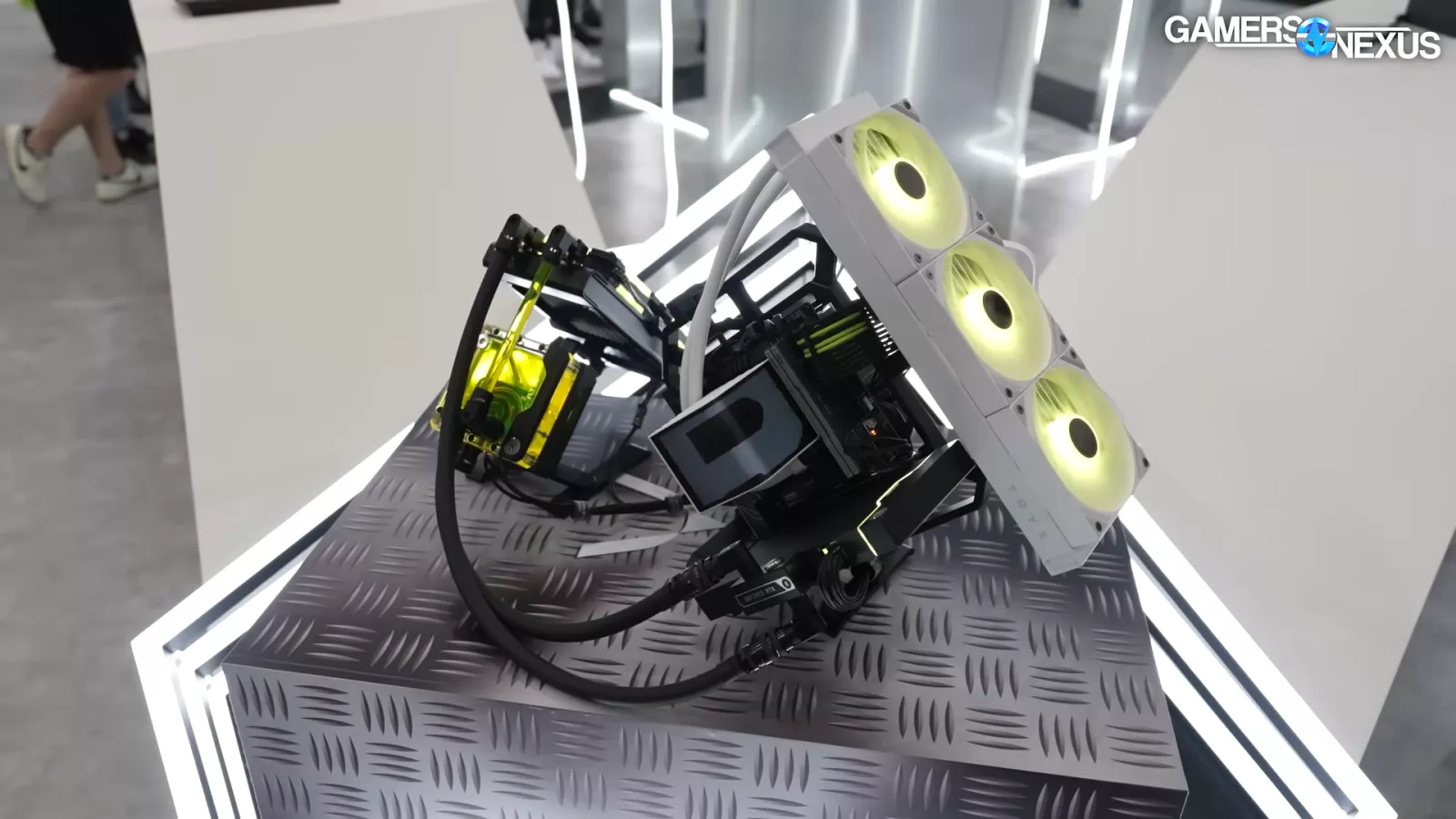
In terms of cost, the price range is roughly $300-$400 for a 360mm AIO.
Spes | ITX Case
Next up, we have the Spes, which is a Mini-ITX case. It’s a small form factor chassis that is relatively large and seems to be reconfigurable to some extent. What we saw is only a prototype but what makes it interesting is that it is trying to get a 15.6-inch 1080p display on the side of the case, like the Snowblind case we saw years ago.
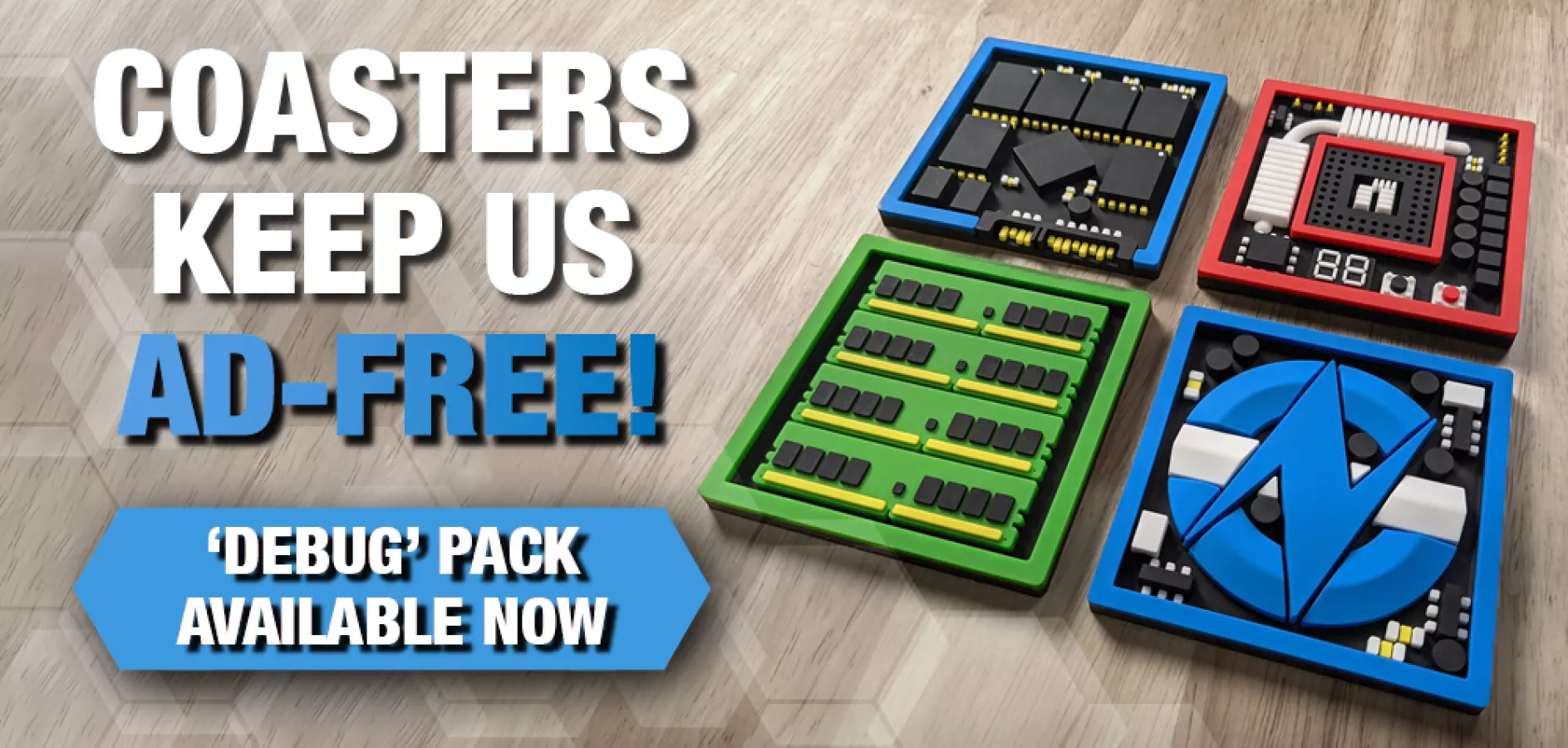
Otavia

Finally, there’s the Otavia case, which feels like it belongs in the 70s with its experimental fabric that makes it feel like you just did some psychedelic drugs.
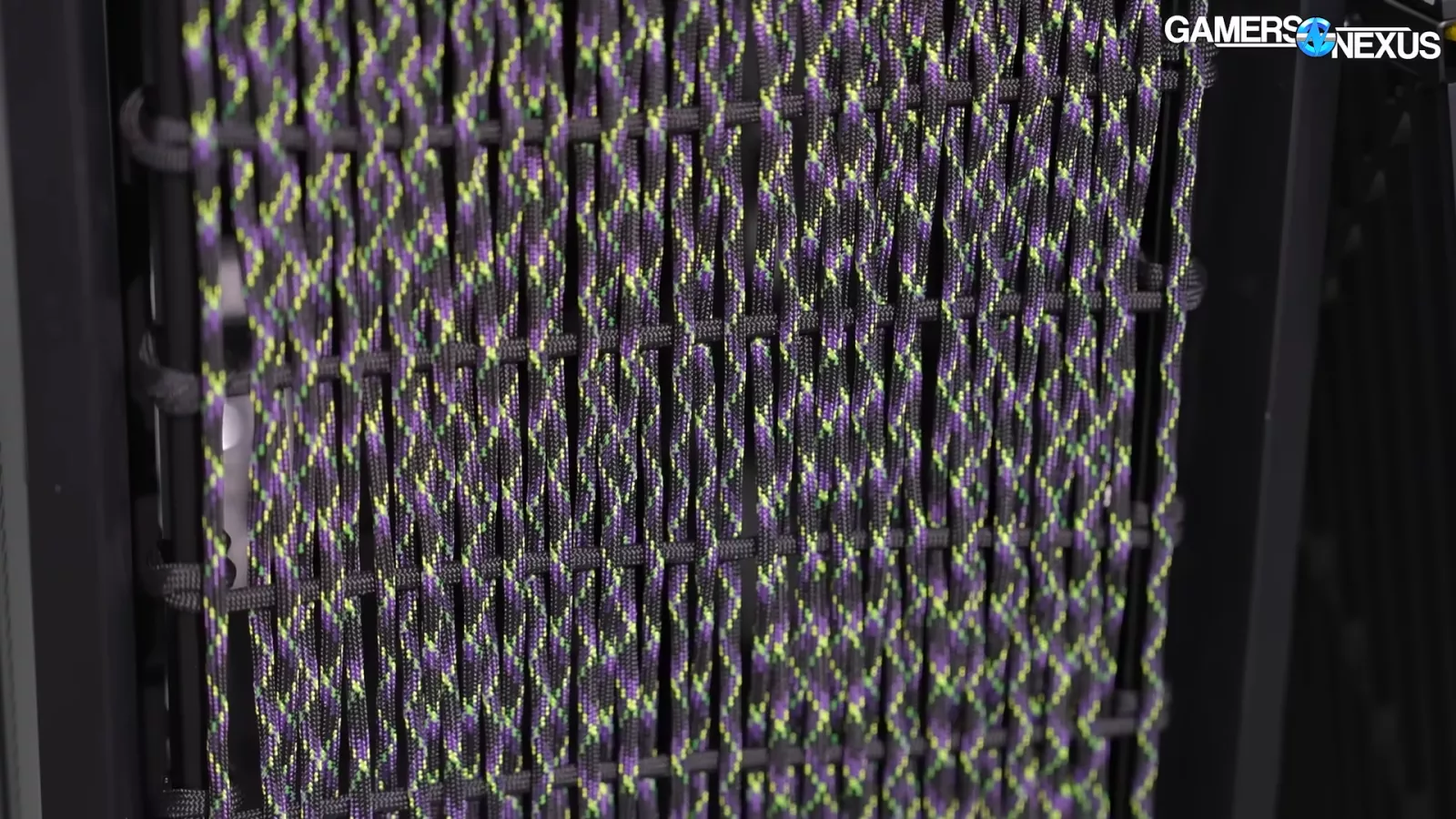
The fabric is almost like a paracord material, which we think would be restrictive to airflow.

The side of the case underneath the glass also has an odd carpet-like material.
